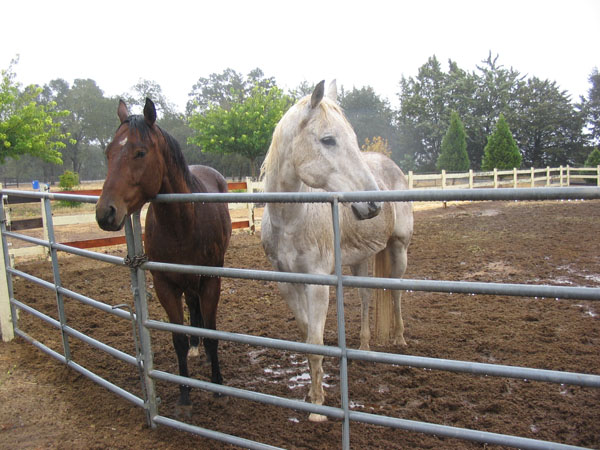
Solomon was a Talker McTalkypants today. The moment he spotted me, he started telling me his life story. "HurrhurhurhurHURRRR! Hur hur hur! HURRRR!"
He had a wet butt, but his belly was dry.
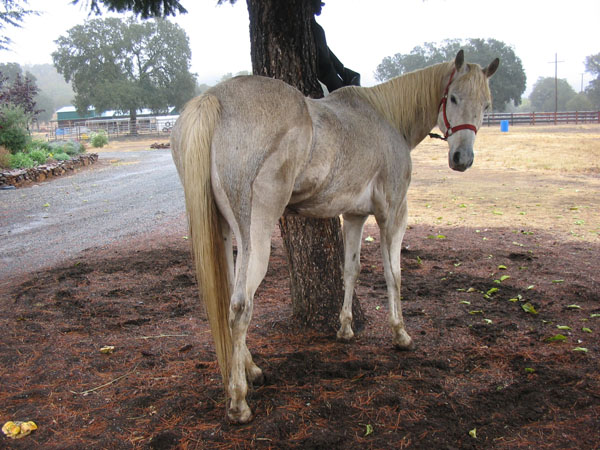
He still needs to put on weight, but the water lines make it look worse than it is. You still have to press to feel his ribs.
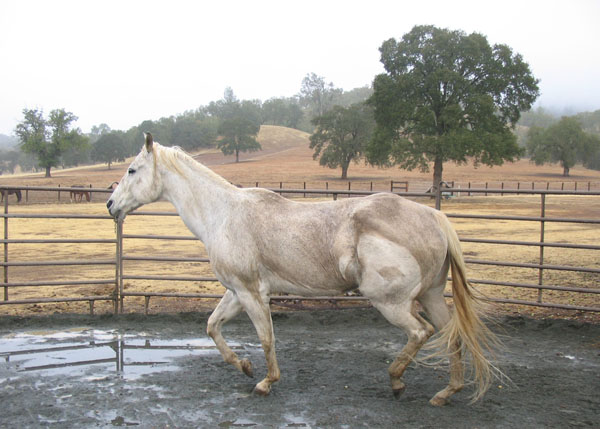
After working him a bit, I cuddled Solomon, and we wandered around together for a little while.
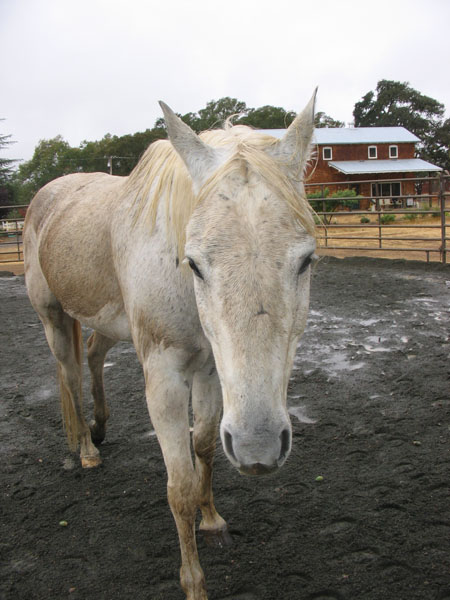
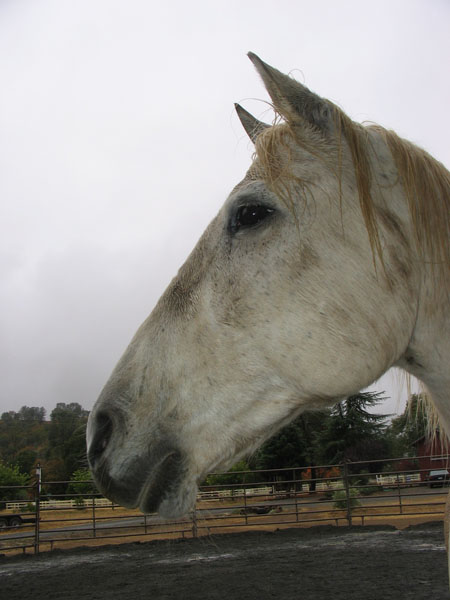
My boy makes me so happy!
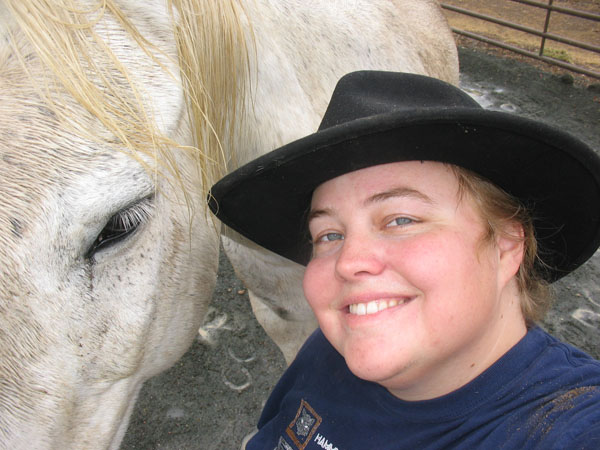
Mud season is hardcore hoof care season. Solomon's hooves are very delicate things, and a light mist will give him thrush or other infections. Today I spend a fair amount of time scrubbing his feet out and then applying some coppertox. That stuff is harsh, but I'm trying to cover my bases here. The farrier will be out on the 30th, and I will discuss my concerns with him then. His feet seem kind of squeezed in, and those crevasses between the frog and the hard part of the sole are way too deep.
Next visit I will iodine his feet, and the visit after that I might try some triple antibiotic ointment. I'll keep cycling hoof treatments.
They got really gnarly last year too. I'm glad the soil here is sandy. That's not as bad as clay.
After I gave Solomon a generous feed pan and then raked up a bucket of loose oat hay for him to munch, I did a little bareback mare riding, yay! I've come to prefer bareback. Easier to feel the movement of the horse and to move with her.
Then we pulled out Kizim, and I took her for a walk!
The manzanita was lovely.
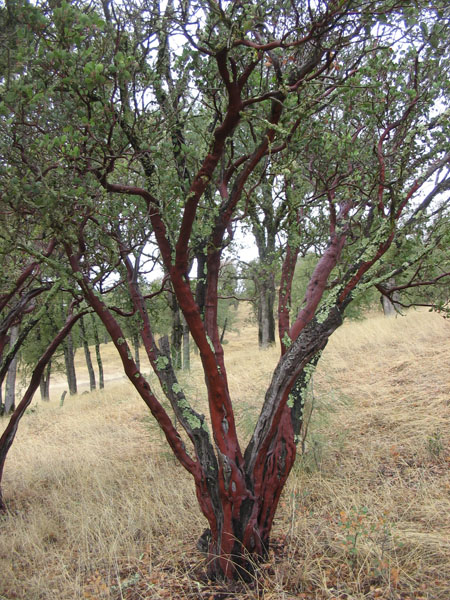
Kizim moves pretty slowly and mostly wants to eat stuff until you get her into the hills. She wants to run up and down the hills- there are mountains in her blood!
Sorry this is kind of cut off, heh. I like the photo anyway.
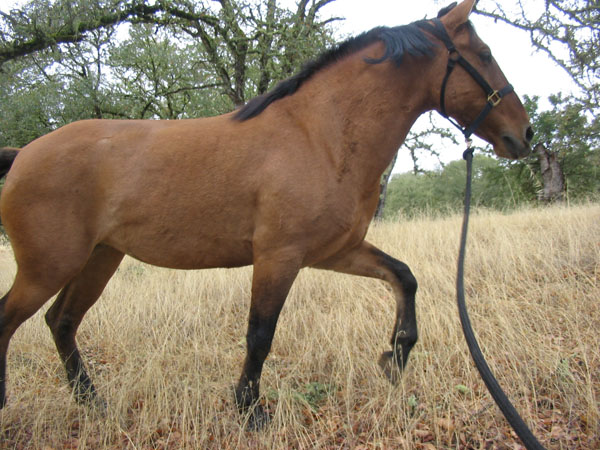
No girl, it is walking time, not eating time.
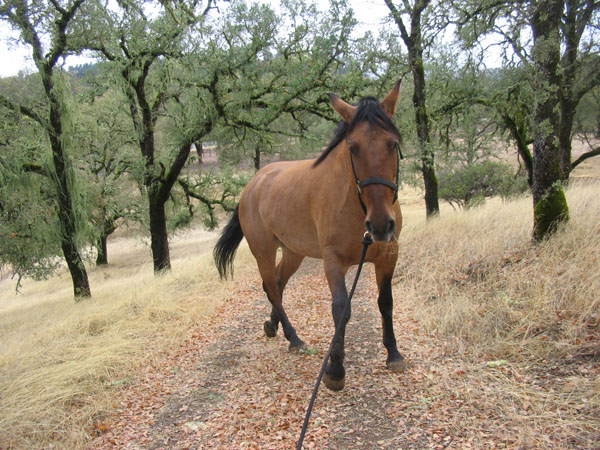
She is checking out the scenery. I just love her ears, double dipped in black and gold at the tips!
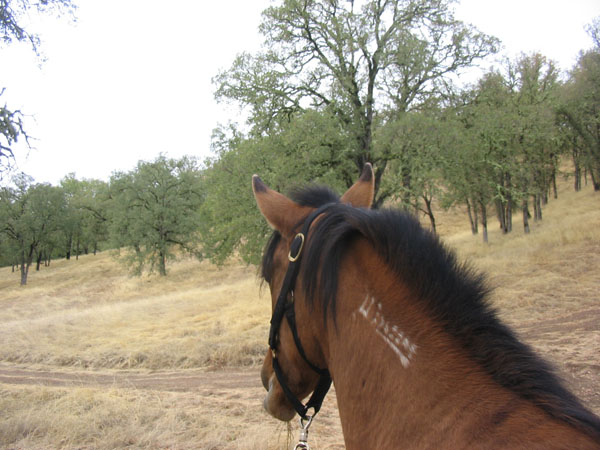
Kizim is fun to work with. At first she was mostly paying attention to what she could eat instead of what I was asking her to do. I quickly decided that getting into a tug-of-war would not be productive for either of us, so instead I decided to try applying some Western riding theory to how I worked with her on the ground. Good ground work makes a solid foundation for good riding.
In Western, contact and communication are often a bit different than in English. Back at Hossmoor, for example, many people walking their horses would tightly hold the lead line right under the horse's chin. That is one kind of contact, and you see that in some Western disciplines too. But another way of doing things is to have a fairly loose lead line through which you can also communicate.
Horses are very sensitive, and they can feel how much rope is hanging off their face. Simply lifting it and transferring some of the slack from them to your hand can be enough of a cue. It's all about timing. Timing and consistency. Horses communicate without words, and they do so very quickly. For us humans, well, we don't always read body language as well or as quickly, so a horse might have asked if they could do something and then begun to do it before we have noticed at all that there is a change in their behavior. So the solution is to try to be as keyed in to the horse as we expect the horse to be keyed in to us. We might not be as good at this as the horse is, but we can aspire to be.
So after we did a few gentle turns and back ups to get her to listen up and be supple, I held the end of the rope firmly in one hand, just in case, but I balanced the rope over the side of my other hand, between my finger and my thumb, but with no squeezing, so that the rope was simply resting there. When I felt any increase in the weight of the rope, indicating that she was beginning to lower her head to eat, I would simply raise my hand a bit and say "walk" in a firm voice that was commanding without being a reprimand. She responded very very well to this, and we were soon trudging all over the ranch with very few attempts on her part to eat stuff off the ground. Her ears were perked forward or turned to listen to me, and she seemed quite happy. I think I found some work ethic! I just needed to learn how to communicate effectively with her. As often seems to be the case, softer was better.
When I finally put Kizim back in her mare motel, she tried to follow me back out!
Next, I watched Bo work with Remmy.
Here Remmy is, haivng a bosal put on. The horsehair rein with attached lead rope is called a mecate. This is a long-standing California tradition, harkening back to the days when the Spaniards owned this land. The Vaqueros would break horses in a bosal, and Remmy was started in one, though it had been a while since he'd worn one. Remmy is 4, and has been trained slowly and carefully to allow his body and mind time to develop. Bo intends for Remmy to be healthy and to hold up well to work.
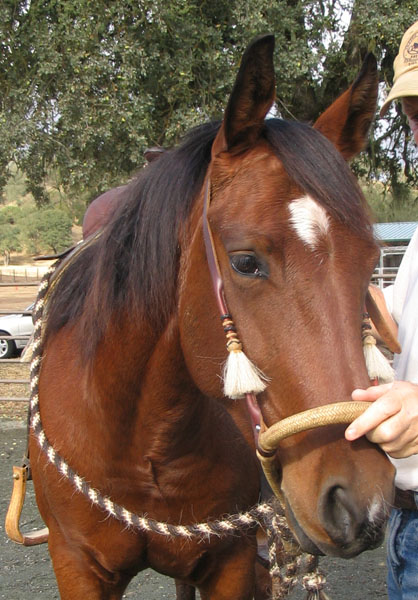
I just love his face.
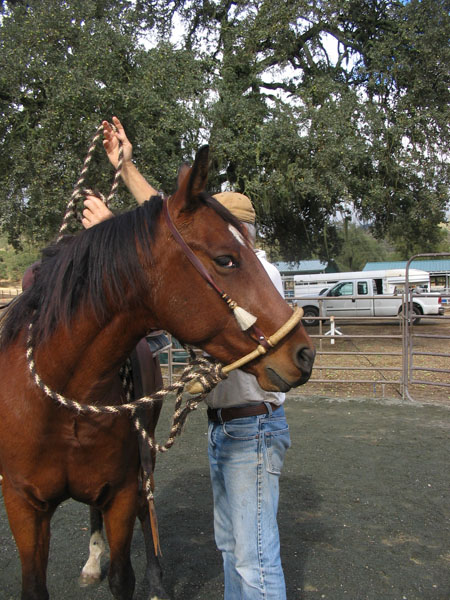
A bosal does not have a bit. It works off of pressure on the nose, though with a well-trained horse there is not really pressure, only communication. A bosal, like any tool in the horse world, CAN be used very harshly. But that's not the way things are done here at the ranch, and that's not the way the Rein Cow Horse discipline works. It's all about lightness, communication, and a horse who is able to balance himself. When working cattle, you cannot rely on constant controlled contact. The horse needs to be able to make decisions and steer himself to control a cow that wishes to run back to his herd. But he also needs to be able to respond to the lightest cue from his rider- a lifting of the reins, where, like Kizmet responding to me picking the lead rope up a bit, the reins are still slack but the weight of them has shifted a tiny bit.
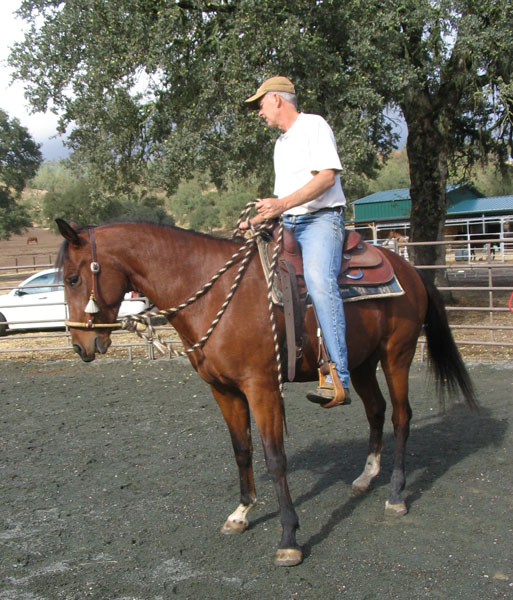
Bear in mind that Bo is in training mode, so he is not in perfect equitation form... he is more concerned about clearly communicating to a young horse.
Here you can see Remmy bending. Further down the road in his career, he will learn to do various moves without following his nose, but for now he is learning to be soft and supple, and to use his body.
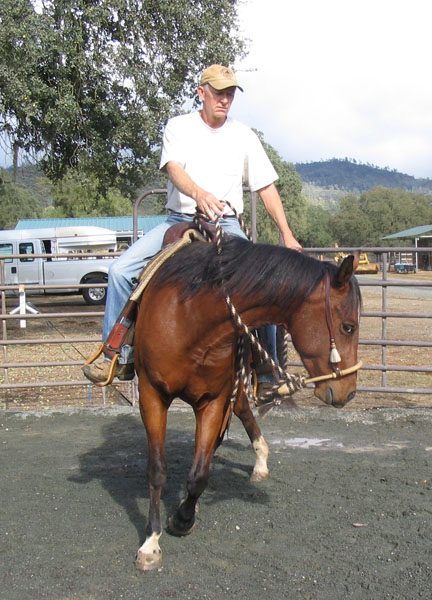
Not bad collection, eh? Western collection doesn't have as high of a neck curve as dressage collection seems to. But then, a Quarter Horse is built a little differently than a Friesian or a Hanoverian.
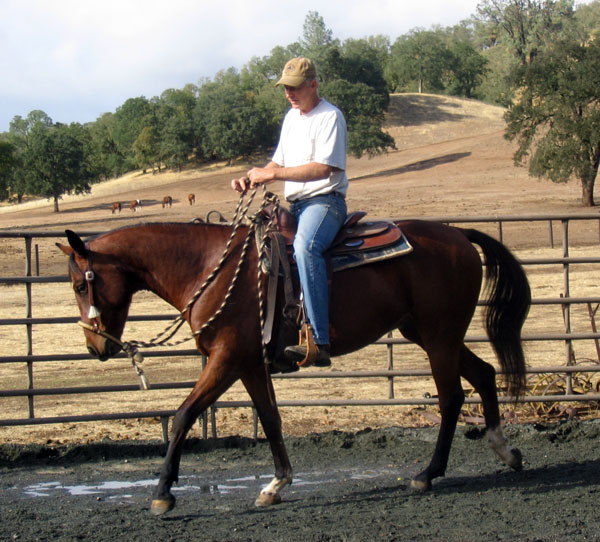
After following Bo and Remmy around for a good while, I helped with the evening feeding. I enjoy slinging hay! And the smell of the hay is very soothing to me. I love seeing happy horses eating good food.

2 comments:
Love the pictures of my girl. Thank you so much, I appreciate it. Looks like some of her mane is growing back finally! Yay! Can't wait to see more!
You're welcome darlin'!
Her mane is starting to come in, which is nice. She's continuing to get muscle too. Hoping to hop on when I get up there next, which I'm also hoping will be soon. Money's so tight right now. :/
Post a Comment